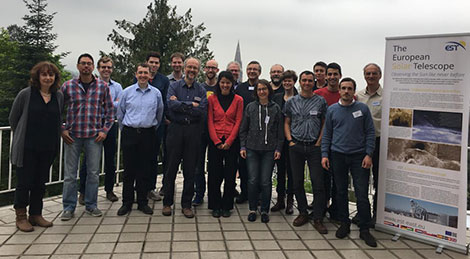This work package addresses the essential capabilities needed to complete the facilities for experimental solar physics from the ground. Large, high resolution telescopes admit only a small field of view. However, context data showing the big picture of the dynamics and magnetism at different heights of the solar atmosphere are equally important to understand the Sun in general. Real-time information about the variation of surface velocity, magnetic field and intensity at different solar layers is an essential input to space weather prediction and to fundamental solar physics, but still hard to come by with any degree of reliability. There is a consensus that a world-wide distributed network of a suite of small, dedicated telescopes which observe the entire solar disk will be an essential support for coordinated observations with the major infrastructures.
This work package will translate the technical concept for such a network – SPRING – which has been developed during SOLARNET FP7, into a preliminary design. The key scientific products of this facility will be arc-second resolution context images in various wavelengths, synoptic vector magnetic fields, synoptic surface velocity fields with high time cadence, and observations of transient events such as flares. The work will include designs of mounting and telescopes, design and prototyping of post focus instruments, and the definition of the data processing pipelines. The work package combines the competences of 15 partners, two of which are from the US and two are industrial.

